
25 amazing ways to use fruit infused ice cubes in cooking you need to try
Fruit-infused ice cubes can be a game-changer in the kitchen. Discover 25 ways to incorporate them in your cooking from soups to desserts.

One of my favorite things to teach others while they’re dieting is to embrace cultural foods to make things more exciting. Sure, I love my celery sticks, smoothies, and fish, just like the next girl who eats healthy, but that’s not all there is to eating healthy! I don’t even look at my food as dieting because it has so much variety in it. One way I like to make what goes on my plate more diverse is by adding ethnic flavors and spices, along with traditional ones too. Learn to embrace cultural foods while you’re on a diet so things don't feel so restricted. You don't have to deprive yourself of flavorful foods! There's a world of them out there waiting to be tasted that aren't necessarily unhealthy for you. There’s much more to cultural foods than pizza, or fried dumplings and noodles!
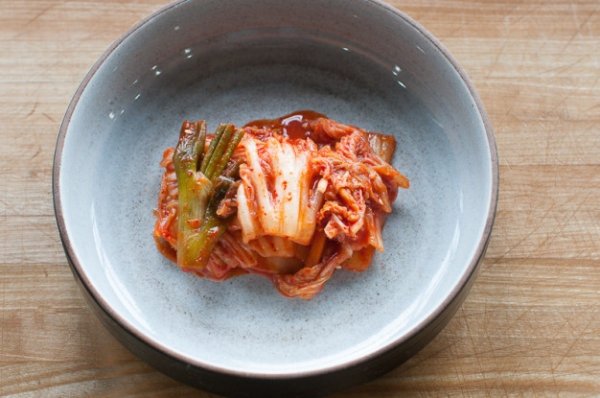 I’m a huge fan of kimchi, and it’s one way I embrace cultural foods on a day to day basis. Kimchi is basically a spicy, Asian form of sauerkraut. It’s fermented cabbage, with added ethnic spices like peppers, garlic, and some form have carrots or onions added. It’s incredibly delicious and really adds a nice zing to your meals. If you like hot sauce, you’ll love kimchi! I don’t even like sauerkraut, but I adore Korean kimchi. My favorite brands are King’s kimchi, and Sunja’s, but there are many more available. You’ll find them in the produce section at your grocery store in the refrigerated section with dressings and ethnic foods like tofu. You can add kimchi to any dish, but be sure not to cook it! Since kimchi is fermented, it contains natural bacteria that is great for digestion and helping reduce IBS symptoms, along with helping assimilate nutrients from your meal. I like it over salads, on top of fish dishes, or I like to mix it in tuna salad with mustard and celery. It’s also great tossed in zucchini noodles, or even eaten on top of roasted squash halves with Sriracha sauce and black pepper.
I’m a huge fan of kimchi, and it’s one way I embrace cultural foods on a day to day basis. Kimchi is basically a spicy, Asian form of sauerkraut. It’s fermented cabbage, with added ethnic spices like peppers, garlic, and some form have carrots or onions added. It’s incredibly delicious and really adds a nice zing to your meals. If you like hot sauce, you’ll love kimchi! I don’t even like sauerkraut, but I adore Korean kimchi. My favorite brands are King’s kimchi, and Sunja’s, but there are many more available. You’ll find them in the produce section at your grocery store in the refrigerated section with dressings and ethnic foods like tofu. You can add kimchi to any dish, but be sure not to cook it! Since kimchi is fermented, it contains natural bacteria that is great for digestion and helping reduce IBS symptoms, along with helping assimilate nutrients from your meal. I like it over salads, on top of fish dishes, or I like to mix it in tuna salad with mustard and celery. It’s also great tossed in zucchini noodles, or even eaten on top of roasted squash halves with Sriracha sauce and black pepper.
Along with Asian flavors, I love my Italian flavors to no end! Oregano is by far my favorite Italian flavor of all. I add it to fish, on top of salads, and it goes in all my soups. In fact, you can add oregano anywhere you want a high dose of flavor, even if you’re not in the mood for Italian. It also makes a great topping for roasted veggies and even in homemade healthy dips. Plus, oregano is great for you! It has more antioxidants per tablespoon than any other fruit or veggie. Not too bad for such a delicious little herb, right?
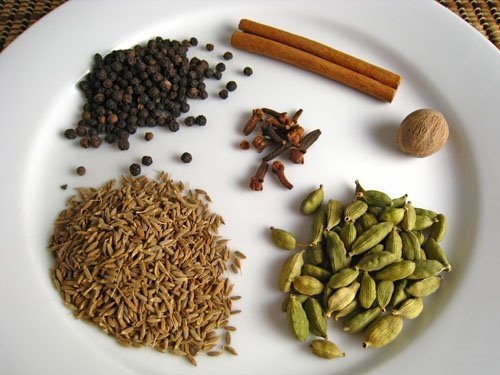 Okay, now let’s talk about my favorite spice blend: garam masala. Garam masala is nothing more than blend of flavors that can differ from region to region. It’s typically an Indian spice, and usually contains black pepper, cardamom, cumin, coriander, cinnamon, ginger, cloves, and nutmeg. Some varieties also add turmeric, salt, or even star anise. I personally love Simply Organic’s brand of garam masala. It can be use over anything from sweet to savory. I use it on top of baked fish, in salad dressings, on roasted squash, in homemade tomato sauce, and I even sprinkle it on oatmeal! Its delicious sweet and savory flavor is just one that must be appreciated as much as possible. You can find it in your local supermarket on the spice aisle.
Okay, now let’s talk about my favorite spice blend: garam masala. Garam masala is nothing more than blend of flavors that can differ from region to region. It’s typically an Indian spice, and usually contains black pepper, cardamom, cumin, coriander, cinnamon, ginger, cloves, and nutmeg. Some varieties also add turmeric, salt, or even star anise. I personally love Simply Organic’s brand of garam masala. It can be use over anything from sweet to savory. I use it on top of baked fish, in salad dressings, on roasted squash, in homemade tomato sauce, and I even sprinkle it on oatmeal! Its delicious sweet and savory flavor is just one that must be appreciated as much as possible. You can find it in your local supermarket on the spice aisle.
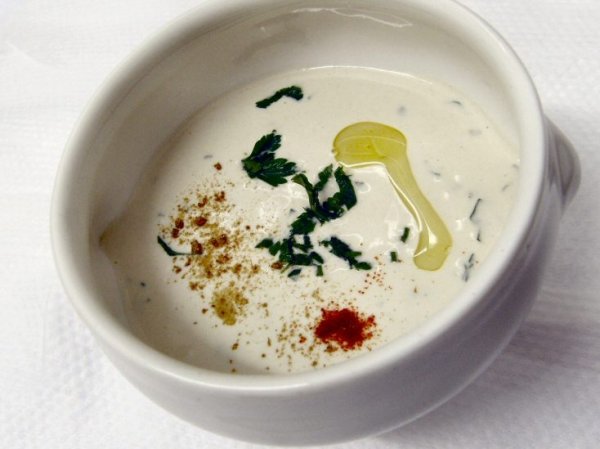 Tahini is becoming more and more popular every single day. It’s a favorite nut butter alternative for many people, and a typical ingredient for many vegetarian dishes. However, do know that if you’re on a diet, you don’t have to be a vegetarian, or even be on a diet to enjoy it! Tahini is usually made from roasted sesame seeds, and even sometimes raw sesame seeds for a milder flavor. It has a rich, nutty, and creamy taste that many people use in dressings, or ethnic inspired meals. It’s very popular with people who have nut intolerances or allergies since it’s seed based. It has a very creamy texture, which is very satisfying. The nutrient content is what makes it so great for anyone with a healthy lifestyle. Tahini is rich in calcium, which is great for vegans or vegetarians, and it’s also a high source of Vitamin E, magnesium, potassium, and protein. One of my favorite ways to use tahini is as a creamy sauce for plain steamed veggies. Blend 2 tablespoons of tahini with the juice from one lemon, some black pepper, a dash of liquid stevia, and some parsley. Drizzle this on your veggies, and wow! Talk about a delicious, creamy dressing. It’s so much better than store bought, I promise! This can help you enhance the flavor of healthy dieting dishes like salads and veggies, rather just eating them plain.
Tahini is becoming more and more popular every single day. It’s a favorite nut butter alternative for many people, and a typical ingredient for many vegetarian dishes. However, do know that if you’re on a diet, you don’t have to be a vegetarian, or even be on a diet to enjoy it! Tahini is usually made from roasted sesame seeds, and even sometimes raw sesame seeds for a milder flavor. It has a rich, nutty, and creamy taste that many people use in dressings, or ethnic inspired meals. It’s very popular with people who have nut intolerances or allergies since it’s seed based. It has a very creamy texture, which is very satisfying. The nutrient content is what makes it so great for anyone with a healthy lifestyle. Tahini is rich in calcium, which is great for vegans or vegetarians, and it’s also a high source of Vitamin E, magnesium, potassium, and protein. One of my favorite ways to use tahini is as a creamy sauce for plain steamed veggies. Blend 2 tablespoons of tahini with the juice from one lemon, some black pepper, a dash of liquid stevia, and some parsley. Drizzle this on your veggies, and wow! Talk about a delicious, creamy dressing. It’s so much better than store bought, I promise! This can help you enhance the flavor of healthy dieting dishes like salads and veggies, rather just eating them plain.
This is one cultural flavor you probably already love and use. I’m sure you’ve also heard a good bit of health advice regarding this delicious ethnic spice. One of the easiest ways to embrace cultural foods is by using turmeric in your dishes. It has a pungent smell, and a beautiful orange color, but surprisingly, it’s actually very mild in flavor. It’s used in many curry dishes, and almost all Thai foods. I bet you didn’t know it’s even what gives mustard its typical yellow hue! Turmeric is full of antioxidants. It’s rich in curcumin, which is what gives it its health properties for lowering heart disease, high blood pressure, increasing skin health and appearance, and even reducing cholesterol. Many people also love the warming properties of turmeric for digestive issues, and use it in heated milk as a comforting beverage. Since it’s calorie-free, you can add it to anything! I like it in sauteed and roasted veggies, fish, egg omelets, and even hot tea. I also make homemade salad dressings with it, or fun new sauces. It’s really such an easy way to add cultural flavor to healthy meals that anyone could make more use of to jazz up their dieting routine.
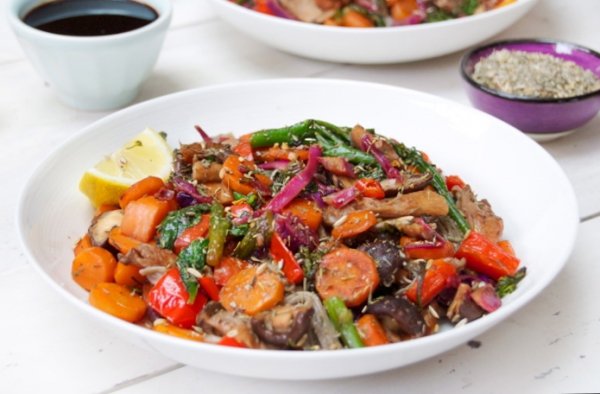 I’m a huge fan of traditional flavors when it comes to embracing cultural foods. One traditional flavor we all love is most likely soy sauce in stir fry. This is a favorite dish of many, yet many people don’t want to use typical soy sauce since it’s often GMO, and contains wheat. Both soy sauce and tamari are made from fermented soybeans, yet tamari is usually gluten-free. Many people are now using tamari instead of soy sauce because it contains little to no wheat, and is also usually non-GMO, though not always. Try tamari to add a punch of flavor which provides almost an identical flavor in cultural dishes like soy sauce does. Tamari is fantastic on just about anything, and even pairs well with tahini in flavorful dressings. Tamari is high in sodium, so still watch how much you use. A little goes a long way, but can really take boring dishes up a notch or two.
I’m a huge fan of traditional flavors when it comes to embracing cultural foods. One traditional flavor we all love is most likely soy sauce in stir fry. This is a favorite dish of many, yet many people don’t want to use typical soy sauce since it’s often GMO, and contains wheat. Both soy sauce and tamari are made from fermented soybeans, yet tamari is usually gluten-free. Many people are now using tamari instead of soy sauce because it contains little to no wheat, and is also usually non-GMO, though not always. Try tamari to add a punch of flavor which provides almost an identical flavor in cultural dishes like soy sauce does. Tamari is fantastic on just about anything, and even pairs well with tahini in flavorful dressings. Tamari is high in sodium, so still watch how much you use. A little goes a long way, but can really take boring dishes up a notch or two.
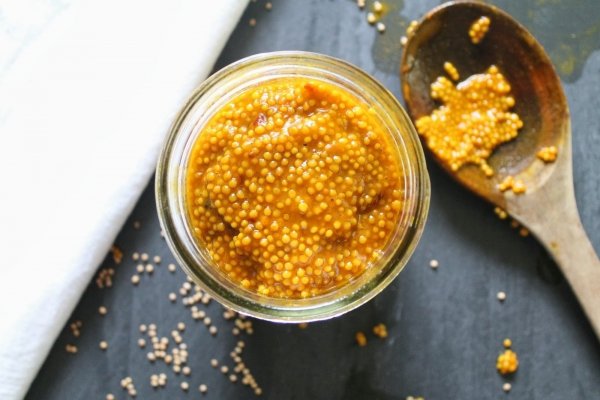 Yes, even the simple condiment many of you grew up eating on hot dogs is also a way to add cultural flavors to foods. The mustard seed is actually a popular spice that’s used in many cultures, and ground from whole seeds for a really strong flavor, unlike the thin condiment most of us love. It adds a fun flavor to any dressing, sauce, as a topping for protein, or just eaten as a spread. You can mix it with chili powder and a little apple cider vinegar for a terrific flavorful dressing that is so spicy and satisfying! Plus, it’s zero calories so you don’t have to worry about it undoing your dieting efforts.
Yes, even the simple condiment many of you grew up eating on hot dogs is also a way to add cultural flavors to foods. The mustard seed is actually a popular spice that’s used in many cultures, and ground from whole seeds for a really strong flavor, unlike the thin condiment most of us love. It adds a fun flavor to any dressing, sauce, as a topping for protein, or just eaten as a spread. You can mix it with chili powder and a little apple cider vinegar for a terrific flavorful dressing that is so spicy and satisfying! Plus, it’s zero calories so you don’t have to worry about it undoing your dieting efforts.
Another diet-friendly way to add cultural flavor to foods is hot sauce. You might already use this popular form of seasoning, perhaps in the form of Texas Pete or Sriracha. It’s such a popular way to add flavor to foods without calories, plus it’s great for you! Hot sauce is made from peppers, which are great for your arteries, metabolism, and even your appetite. Just watch the sodium, since it can be high, and use a little bit to add a lot of flavor wherever you want.
Okay, so here’s a little trick I like to use for noodle based dishes. I use zucchini noodles! They are so mild in flavor, and are so easy to make. You can use a vegetable spiralizer, or a mandolin to create noodle like strips. Zucchini noodles are so much healthier than enriched grain noodles, which have no nutrients, and an excess of insulin-spiking carbs. When cooked or eaten raw, zucchini noodles give you that same starchy flavor, without all the starch surprisingly. You can even use sweet potato noodles or carrot noodles too! Experiment with vegetable based noodles in any cultural dishes that uses typical noodles. It makes for such a healthy, fun way to add texture to your cultural dishes.
Cultural flavors and foods can make healthy eating a bit more exciting. There’s nothing wrong with traditional, and more typical diet and health foods, but it never hurts to try something new either. Do you use these cultural flavors and foods in your dishes? Which ones, and how?

Fruit-infused ice cubes can be a game-changer in the kitchen. Discover 25 ways to incorporate them in your cooking from soups to desserts.

Learn the secret to making the most delicious strawberry desserts that will have your friends and family begging for more!

Discover the top cooking shows currently streaming on Netflix, offering a mix of culinary education, competition, and cultural exploration for food enthusiasts.

Step out of your comfort zone and try these extraordinary fillings to make your tea sandwiches stand out.

Food has a rich history that spans cultures and continents. This blog post explores the origins of popular dishes and ingredients and the stories behind the foods we love.

Discover unique and mouthwatering tea sandwich recipes that will surprise your taste buds.

Find out the easiest way to make delicious strawberry desserts that will have your taste buds singing!

Unlock the secrets of taste and learn how to develop your palate, enhancing your enjoyment of food and expanding your culinary horizons.

Discover tea sandwich recipes that are perfect for various events, whether formal or casual.

Uncover the hidden history of the world's most beloved sweet treats, from ice cream to cheesecake, and how they've evolved over time.

Discover 7 delicious strawberry desserts that will make your mouth water. From strawberry ice cream to rhubarb crisp, these recipes are sure to satisfy your sweet tooth.

Pairing cocktails with appetizers isn’t just about flavor—it’s about creating a memorable experience. Think of the spicy kick of shrimp tacos cooled by a zesty Margarita or the rich taste of bacon-wrapped dates paired with a warm Old Fashioned. These combinations elevate any gathering, making each bite and sip a delightful adventure.

Dive into the surprising history of the sandwich, its humble beginnings, and how it became a staple in lunchboxes around the world.

Unlock the secret to making the most delicious strawberry milkshake with these simple tips!

Cherries are not just delicious; they're packed with nutrients and antioxidants. Discover the myriad ways these juicy fruits can improve your health.

Treat yourself to these 3 delicious strawberry desserts that taste so good you'll want seconds. From strawberry cheesecake to strawberry mousse, these recipes are sure to satisfy your sweet tooth.
Sign up for our newsletter.